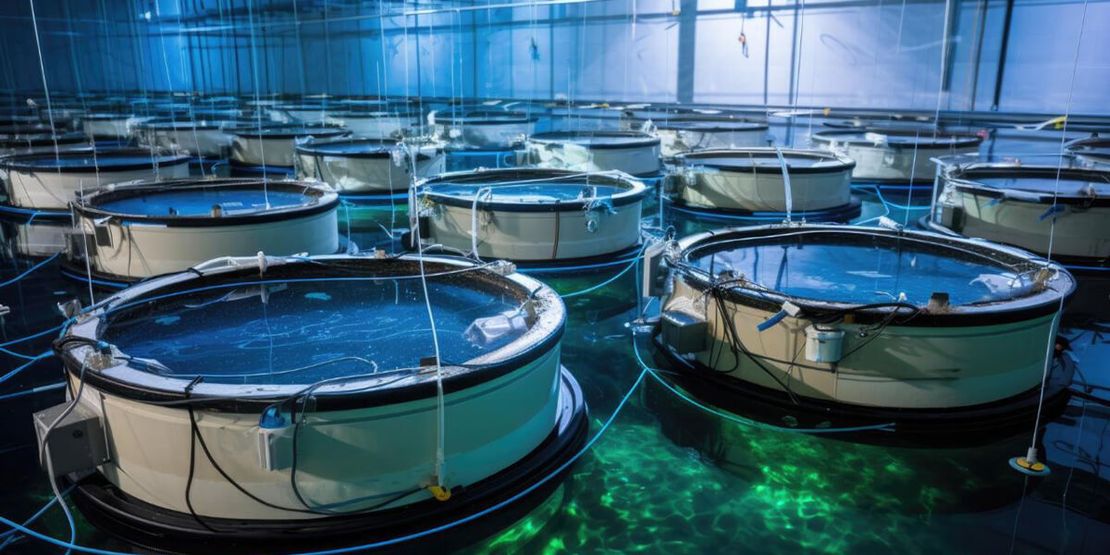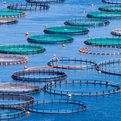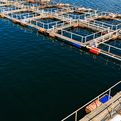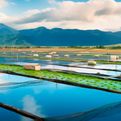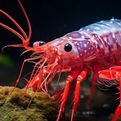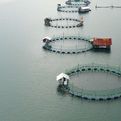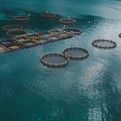Automated Feeding Systems in Shrimp Farming: A Comprehensive Comparison
Automated feeding systems have revolutionized shrimp farming, offering farmers efficient and precise ways to provide consistent nutrition to their shrimp stocks. With a variety of options available, each system comes with its own set of advantages and disadvantages.
In this article, we'll delve into the comparison of different automated feeding systems, weighing their pros and cons to help farmers make informed decisions tailored to their specific farm requirements.
Centralized Feeding System
The central feeding system is a popular choice for large-scale shrimp farms. This system features a central feeding unit connected to multiple feeding points throughout the farm via tubes.
Pros
- Efficiency: Centralized control ensures that each tank receives the correct amount of food at the designated time, promoting uniform growth across the farm.
- Accuracy: Automated dispensing by a computer-controlled system minimizes the risk of over or underfeeding, optimizing shrimp nutrition.
- Reduced Clogging: The centralized design reduces the likelihood of tube clogging, minimizing maintenance requirements.
Cons
- High Initial Cost: The installation of a central feeding system entails significant upfront investment, including the central unit, tubes, and pumps.
- Complexity: The system's complexity may require specialized expertise for installation and ongoing maintenance, adding to operational costs.
Individual Feeding System
Ideal for smaller shrimp farms, the individual feeding system equips each tank with its own feeding unit, controlled by a computer to dispense the appropriate amount of food.
Pros
- Cost-Effectiveness: Individual feeding systems are generally less expensive to implement compared to centralized systems, making them accessible for smaller operations.
- Ease of Installation: The simplicity of individual units facilitates straightforward installation and setup, reducing labor and time requirements.
- Simplified Maintenance: With fewer components, individual systems may require less frequent maintenance compared to centralized counterparts.
Cons
- Limited Efficiency: Individual systems may be less efficient in ensuring uniform feeding compared to centralized systems, potentially leading to variations in shrimp growth.
- Scaling Challenges: As farms expand, managing multiple individual feeding units can become cumbersome and may necessitate system upgrades or modifications.
Drop Feeding System
The drop feeding system involves depositing small amounts of food directly into each tank through an opening in the lid.
Pros
- Simplicity: Drop feeding systems are straightforward to install and require minimal equipment, reducing upfront costs.
- Ease of Maintenance: With fewer components, drop feeding systems are less prone to technical issues and may require less maintenance.
- Customizable Feeding: Farmers can adjust the feeding frequency and amount manually, providing flexibility in feeding schedules.
Cons
- Lack of Precision: Drop feeding systems may result in uneven feeding, leading to variations in shrimp growth and potentially impacting overall productivity.
- Manual Intervention: Since feeding is not automated, farmers must manually replenish food in each tank, increasing labor requirements.
Timed Feeding System
Timed feeding systems utilize timers to dispense food at predetermined intervals throughout the day.
Pros
- Affordability: Timed feeding systems are relatively inexpensive to implement, making them accessible for small to medium-sized farms.
- Consistent Feeding Schedule: Automated timers ensure that shrimp receive food at regular intervals, promoting stable growth and development.
- Ease of Use: Timed feeding systems are user-friendly and require minimal intervention once set up, reducing labor requirements.
Cons
- Limited Precision: Timed feeding systems may not account for fluctuations in shrimp appetite or environmental conditions, potentially leading to over or underfeeding.
- Inflexibility: Fixed feeding schedules may not accommodate variations in shrimp feeding behavior or dietary requirements, limiting adaptability.
Proportional Feeding System
Proportional feeding systems utilize sensors to monitor shrimp density in each tank and adjust food dispensing accordingly.
Pros
- Precision Feeding: Proportional systems ensure that shrimp receive an appropriate amount of food based on population density, optimizing growth and minimizing waste.
- Automated Adjustment: Sensors continuously monitor shrimp activity levels and adjust feeding rates in real-time, promoting optimal nutrition.
- Enhanced Efficiency: By delivering food proportionally to shrimp density, these systems minimize overfeeding and reduce the risk of water quality issues.
Cons
- Higher Cost: Proportional feeding systems typically require a larger initial investment due to the integration of sensors and automation technology.
- Technical Complexity: The implementation and maintenance of proportional systems may require specialized knowledge and expertise, increasing operational complexity.
Comparison and Conclusion
In summary, the choice between centralized, individual, drop, timed, and proportional feeding systems depends on farm size, budget, and operational preferences. While centralized systems offer unparalleled efficiency and precision, they come with higher upfront costs and complexity. Individual, drop, and timed systems provide cost-effective alternatives for smaller farms but may lack the precision and scalability of centralized counterparts. Proportional feeding systems represent the pinnacle of feeding technology, offering real-time adjustment and optimization of food delivery based on shrimp density, albeit at a higher initial investment and technical complexity.
Farmers must carefully evaluate their specific requirements and weigh the pros and cons of each system before making a decision. By selecting the most suitable automated feeding system, farmers can optimize shrimp nutrition, promote healthy growth, and enhance overall farm productivity. Regardless of the chosen system, the adoption of automated feeding technology represents a significant advancement in modern shrimp farming practices, ushering in a new era of efficiency and sustainability in aquaculture.
Riley Sinclair (Digital Aqua Bear)
Hi! I'm Riley Sinclair (Digital Aqua Bear), and I'm exploring the world of digital aquaculture farms. Join me as I delve into innovative methods and sustainable practices for cultivating aquatic life in digital environments. Let's uncover the potential of digital aquaculture farms to revolutionize food production and environmental sustainability.
More From Digital Aqua Farm
Advancing Aquaculture Through Biomass Estimation: Methods and Considerations
Riley Sinclair (Digital Aqua Bear)
Aquaculture Farming: Essential Terms and Definitions for Beginners (Part 1)
Riley Sinclair (Digital Aqua Bear)
Sustainable Seafood Farming: Balancing Harvest and Conservation
Riley Sinclair (Digital Aqua Bear)
Shrimps: Exploring its Culinary Journey from Sea to Table
Riley Sinclair (Digital Aqua Bear)
Shrimp Farming Expenses: Strategies for Cost Reduction and Sustainability
Riley Sinclair (Digital Aqua Bear)
Aquaculture Farming: Essential Terms and Definitions for Beginners (Part 3)
Riley Sinclair (Digital Aqua Bear)


